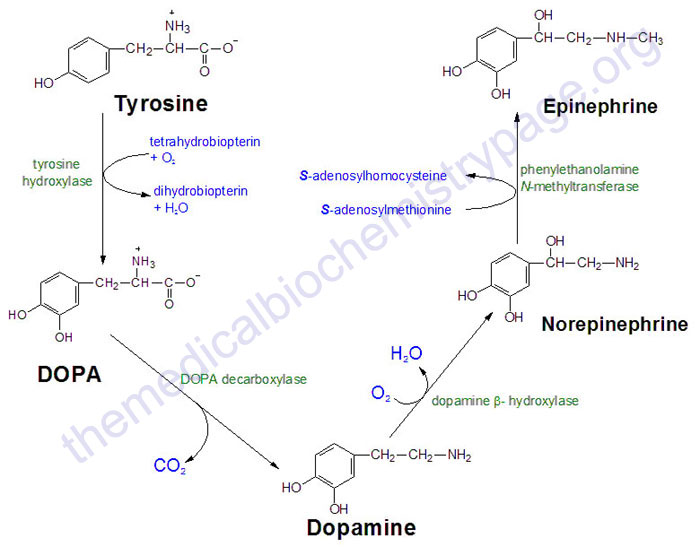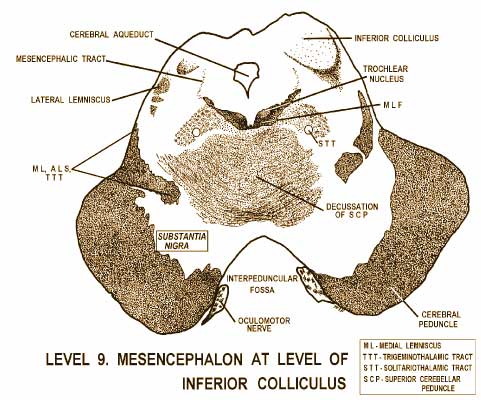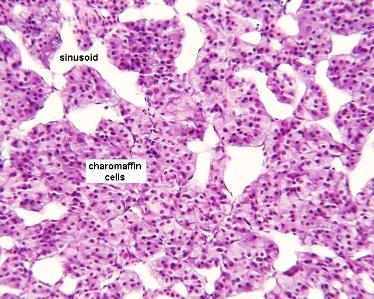   | Catecholamines are water-soluble and are 50% bound to plasma proteins, so they circulate in the bloodstream. The most abundant catecholamines are epinephrine (adrenaline), norepinephrine (noradrenaline) and dopamine, all of which are produced from phenylalanine and tyrosine. Tyrosine is synthesized from the amino-acid phenylalanine by hydroxylation by the enzyme phenylalanine hydroxylase. (Tyrosine is also ingested directly from dietary protein). It is then sent to catecholamine-secreting neurons. Here, many kinds of reactions convert it to dopamine, to norepinephrine, and eventually to epinephrine. Catecholamines can work as hormones that are released by the adrenal glands in situations of stress such as psychological stress, physiological stress; or low blood sugar levels. Or can work as neurotransmitters. Catecholamines are produced mainly by the chromaffin cells of the adrenal medulla and the postganglionic fibers of the sympathetic nervous system. Dopamine, which acts as a neurotransmitter in the central nervous system, is largely produced in neuronal cell bodies in two areas of the brainstem: the substantia nigra and the ventral tegmental area.
|